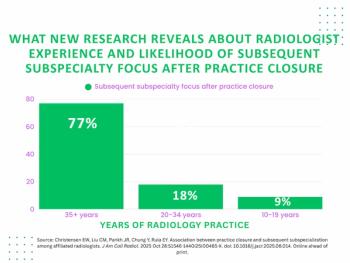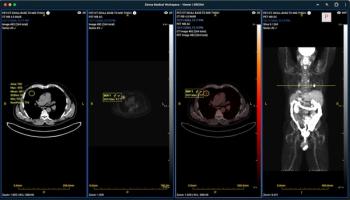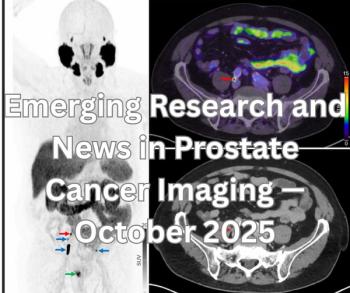Emerging research suggests that artificial intelligence (AI) may be beneficial in identifying high-risk extrapulmonary features on chest computed tomography (CT) scans and facilitate predictions of associated short-term and long-term mortality.
For the study, recently reported in Radiology, researchers assessed the capabilities of an AI model for analyzing low-dose chest CT scans from 24,401 study participants. The study authors noted that 4,283 significant incidental extrapulmonary findings were detected in 3,880 participants (16 percent). Of the entire cohort, 3,389 participants (14 percent) died during the 10-year follow-up period, according to the study.
The study authors found that the AI model had a 70 percent area under the receiver operating characteristic curve (AUC) for predicting incidental extrapulmonary findings. The researchers also noted the AI model had a 71 percent AUC and 72 percent AUC for predicting all-cause mortality at two years and 10 years respectively.
“By combining imaging features from all visible structures, it was possible to identify participants at increased mortality risk in a large multicenter study with various CT scanners and non-contrast image acquisition protocols … ,” wrote lead study author Anna M. Marcinkiewicz, M.D., who is affiliated with the Departments of Medicine and the Division of Artificial Intelligence in Medicine, Imaging and Biomedical Sciences at the Cedars-Sinai Medical Cancer in Los Angeles, and colleagues.
“Importantly, the model ranked the importance of each structure with respect to the risk of mortality individually for each participant. This approach could assist radiologists in identifying high-risk image features that are not their primary focus.”
Noting that the AI model assesses 32 body structures, the study authors said coronary artery calcium (CAC) was the most significant factor for identifying potential disease risk. The researchers pointed out that 24 percent of the cohort had CAC scores > 400 and 20 percent had CAC scores between 101 to 400.
“Of all features used in the analysis, CAC demonstrated the highest feature importance for both 10-year and 2-year (all-cause mortality),” emphasized Marcinkiewicz and colleagues.
Three Key Takeaways
- AI predicts mortality risk from chest CT scans. The AI model analyzed chest CT scans and successfully identified extrapulmonary findings, predicting short- and long-term all-cause mortality with an area under the curve (AUC) of 71 percent at two years and 72 percent at 10 years.
- Coronary artery calcium as a key indicator. Coronary artery calcium (CAC) was the most significant factor in identifying disease risk and mortality prediction, with 24 percent of the cohort having CAC scores greater than 400.
- Common patient history factors associated with extrapulmonary findings. Incidental extrapulmonary findings were more common in older participants, smokers, and those with comorbidities like hypertension and heart disease.
The most common significant incidental extrapulmonary findings were cardiovascular abnormalities (36.5 percent), according to the study. The study authors added that 31.9 percent of the incidental findings were above the diaphragm and 30.9 percent were below the diaphragm.
“Participants with extrapulmonary incidental findings were older, more frequently male, and had longer histories of cigarette smoking … compared with participants without these findings. Furthermore, comorbidities, such as hypertension, diabetes, and heart disease, were more frequently diagnosed in participants with extrapulmonary significant incidental findings,” pointed out Marcinkiewicz and colleagues.
(Editor’s note: For related content, see “Adjunctive AI Leads to 16 Percent Sensitivity for Incidental Pulmonary Embolism,” “How Socioeconomic Disparities Affect Follow-Up of Incidental Pulmonary Nodules on CT” and “Expediting the Management of Incidental Pulmonary Emboli on CT.”)
In regard to study limitations, the authors pointed out the reliance on radiomic features as opposed to clinical quantitative features for the model evaluated in the study. They conceded the model did not provide automated segmentation of breast and lymph nodes, and that partial visibility of some abdominal organs on chest CT affected the accuracy of shape feature analysis.































